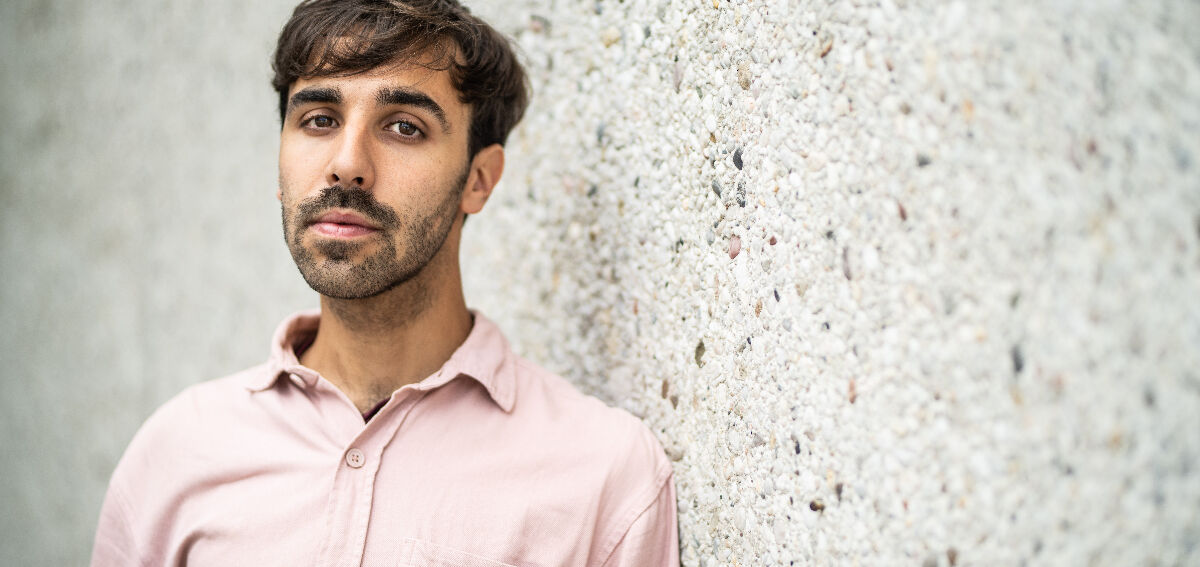Guzmán Llorente: “Renaissance music is a great love of mine.”
Composer Guzmán Calzada Llorente is maker-in-residence at Festival Dag in de Branding. On March 15 he will present the first part of a new work in Amare, in which he juxtaposes old and new instruments. Where does his fascination with Renaissance music come from and what can the audience expect on the 15th of March? Music journalist Joep Stapel asked him. Guzmán: “It took me a long time to understand how these different worlds of old and new music are related.”
Where does that idea of combining old and new music come from?
“I think it has to do with cumbia, a great musical love of mine. Cumbia is the dance music that originated in Colombia and from there has conquered all of South America. Mixes with local traditions have emerged everywhere and every country has its own cumbia style, including Uruguay, where I grew up. I have been playing guitar in cumbia groups all my life, I also have my own group with which I perform a lot and for which I compose and arrange. Cumbia has a large repertoire of old melodies that are reworked continually. I have been working in this tradition for as long as I have been making music. This dialogue has deeply influenced me: very often interaction with older repertoire is underlying my musical ideas.”
Why Renaissance music?
“That’s another great love of mine. Just as I have been playing cumbia all my life, I have also been studying Renaissance polyphony all my life. I studied counterpoint and later started teaching it. I also studied composition and became a composer – of contemporary music, of course. It took me a long time to understand how these different worlds of old and new music are related. Only after years did I find my form.”
What was the deciding factor?
“I was once in Pastrana, a village in the Spanish region of La Mancha, to study Renaissance music. There I saw an organ in the church that was completely covered with strips of old sheet music, probably from the sixteenth century. It was all mixed together, a collage of sheet music. Then I imagined that musicians used to stand around the organ and decide on the spot which pieces to play. Maybe they composed that way, why not? That idea of a musical collage formed the starting point for Strands of polyphony #2 for recorder quartet and electronics, the first piece I presented a year ago in Festival Dag in de Branding.”
Do we hear that music too?
“Yes, certainly, the fragments that were pasted on that organ form the basic material for my piece. I come from a family of architects and they deal with heritage in a completely different way. The idea of an architectural ruin appeals to me. There is a connection between old and new, an integration. You can build something new on the fragments of something old, in a way that expresses contrast. That is why I place historical instruments side by side with electronics in my project. Last year it was a recorder quartet, this time the focus is on string instruments: two violins and a viola da gamba. In June, for my last presentation, I will develop it into a large work for ensemble.”
On Friday, March 15, Guzmán Calzada Llorente will talk to Carine Lacor (NPO Klassiek) about his work and present a preview of his new piece. This program takes place at 7:15 PM in the Swing in Amare. Admission is free if you have an entrance ticket for the Residentie Orchestra or the festival pass. More info
